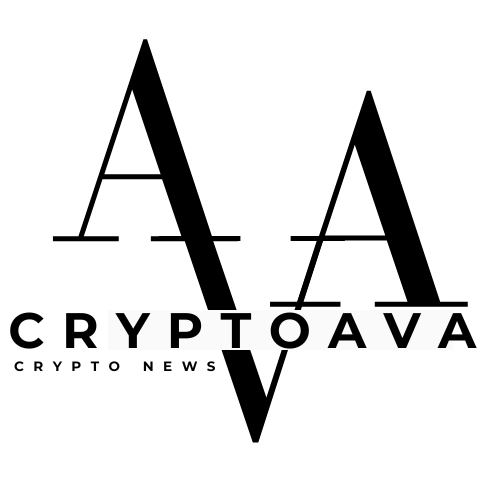Since saying the Trillion Greenback Safety undertaking, we’ve surveyed the ecosystem to know which enhancements are highest precedence to each layer of the Ethereum stack and neighborhood.
Now it’s time to start the following part of this initiative: appearing on the very best precedence points we face.
For this primary wave of actions, we are going to principally concentrate on UX points. Our analysis confirmed these to be essentially the most pressing points dealing with each particular person and institutional customers of Ethereum and Ethereum-based functions.
Throughout this primary wave we are going to kick off a spread of labor concentrating on essential areas in UX safety. The work we start right now is a mixture of excessive leverage short-term actions and long-term tasks that we anticipate will proceed for years. We intend to repeatedly launch new waves of tasks, tackling totally different precedence safety domains over time. As these tasks achieve momentum over the following few weeks and months, we are going to flip our consideration to the following wave of priorities concentrating on different domains.
As at all times, we’re desirous to assist and collaborate with others working to additional enhance Ethereum’s safety and make Ethereum safer for billions of customers and trillions of {dollars} of on-chain capital. Attain out to us at trilliondollarsecurity@ethereum.org.
1. Coordinating a “Minimal Safety Customary” for Ethereum wallets and supporting Walletbeat
Pockets UX is the place safety begins for all customers of Ethereum. If customers can not safely handle keys, signal transactions, and work together with on-chain functions then they can’t use Ethereum safely.
We consider the Ethereum ecosystem ought to develop and undertake a minimal safety commonplace for wallets, which might function a trusted and legit reference level for which wallets are protected for peculiar customers of Ethereum. We consider this commonplace ought to require options like:
- Clear transactions
- Compromise-resistant interfaces
- Privateness-supporting structure
- Requirements for pockets behaviour, e.g. approval administration, key dealing with, frontend verification
- + extra
We’re impressed by the success of L2BEAT in educating customers and making the safety and decentralization properties of L2s clear to the ecosystem.
We consider a Minimal Safety Customary for wallets might assist deal with two totally different sides of this drawback. First, giving peculiar customers a dependable information to picking solely these wallets that meet this commonplace signifies that a higher share of Ethereum customers can have entry to the options they should have a safe on-chain expertise. To do that successfully, the usual have to be a really excessive bar and it should repeatedly be raised as new safety features are developed by the ecosystem or new threats are discovered. Second, the usual will encourage pockets groups to prioritize vital options to stay compliant.
To assist develop and promote such a normal, we’re excited to be offering a grant to Walletbeat, who’ve been working in the direction of the same imaginative and prescient. Walletbeat can be each a contributor to this neighborhood commonplace and a corporation that may assist do the laborious work of measuring wallets towards the usual and making info simply accessible to customers.
Keep tuned for extra details about work on this commonplace and find out how to contribute.
2. Unblocking the “tech tree” to resolve blind signing
One of the important points dealing with UX safety is blind signing. Customers are sometimes anticipated to signal transactions with out the flexibility to know what these transactions will do.
By means of discussions with ecosystem advisors and our stewards, we’ve recognized just a few methods we will help unblock the “tech tree” that can allow extra wallets to deploy options to handle this drawback.
Unblocking transaction decoding
One resolution to the blind signing drawback is for wallets to decode the uncooked transaction knowledge, and translate it right into a human-readable description of what the transaction will do. As an alternative of seeing an extended string of code, a consumer would possibly see info like “Transferring 1,000 of token ABC to recipient 0x123”.
One problem for pockets groups is that this type of function requires a complete dataset of operate signatures, which requires entry to databases of verified contracts, a lot of that are closed supply and require costly licenses to make use of.
Over the previous few years, the Verifier Alliance (VERA) has been quietly working to handle this, and right now has constructed a database of greater than eight million contracts. By means of our analysis it turned clear that many groups have been unaware of the sources VERA gives, and over the following weeks and months we can be selling their work to make sure that pockets groups are conscious of those open supply sources, and exploring different methods to maximise the influence of their work.
Secondly, we’re starting some R&D tasks that we consider would possibly unlock new strategies for transaction transparency in wallets.
- Requirements that might encourage functions so as to add code to their contracts which makes it simpler for wallets to interpret transactions.
- Revisiting previous proposals to handle this drawback which weren’t prioritized by the ecosystem on the time, like ERC 4430, EIP 7730, EIP 719, and exploring find out how to proceed the work of the Human Readable Transactions Group.
Wallets may even go a step additional and truly simulate the outcomes of a transaction in an EVM surroundings towards Ethereum’s present state. This simulation would then return a message like “this X will lead to you sending 1 ETH from X to Y, and receiving 1 NFT from assortment Y.”
If wallets might reliably categorise the extent of belief in contracts with which customers are interacting, this could go even additional in the direction of fixing this drawback.
Some wallets provide these options right now, however we need to make it simpler for extra wallets to take action and for all transaction simulation options to be dependable and top quality.
We’ve got additionally begun a number of R&D tasks to discover whether or not in-protocol enhancements on issues like opt-in transaction assertions and extra safety features would additional enhance the safety of customers.
3. Making it simpler for builders to keep away from deploying weak code
Having an open-source database of good contract vulnerabilities, which can be utilized as a reference by IDEs and different developer tooling, is one thing we consider might assist scale back compromised contracts. These instruments might scan pre-deployed contracts towards the open-source database earlier than deploying the code onchain, permitting builders to extra simply detect vulnerabilities of their utility earlier than they deploy it.
Whereas not strictly a UX undertaking, we consider it is a excessive leverage enterprise the place the EF is in a singular place to assist coordinate a broadly used database, and we invite anybody who wish to assist, reminiscent of audit competitors platforms, auditors, white hats, or others, to assist contribute their findings.
As soon as we’ve a large-scale open-source database in place, the following step is to advocate for software builders to construct options that benefit from this.
Right here’s what the ecosystem will help with:
Extremely easy non-tech pockets
A quite common piece of suggestions throughout our survey part has been that the prevailing wallets are concentrating on the tech crowd. There seems to be a excessive demand for wallets for non-technical customers internationally which offer options that virtually guarantee a safe surroundings by constructing guard rails that also enable customers to have the on-chain expertise. Survey respondents talked about issues reminiscent of straightforward transactions to associates and companies (not having to kind a public key), straightforward funds for items and providers, built-in primary swapping, and the flexibility to revive your pockets. In case you have concepts on find out how to deal with these points then please attain out.
Enterprise centered wallets
Enterprises have talked about the significance of privateness, censorship resistance (together with exterior providers being utilized by the pockets to work together with the community), and compliance necessities for key administration. In case you have concepts on find out how to deal with this then please attain out.


